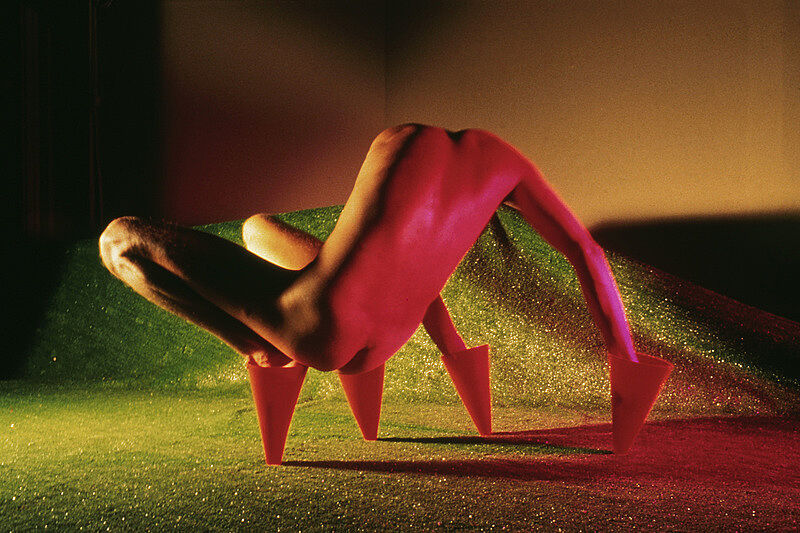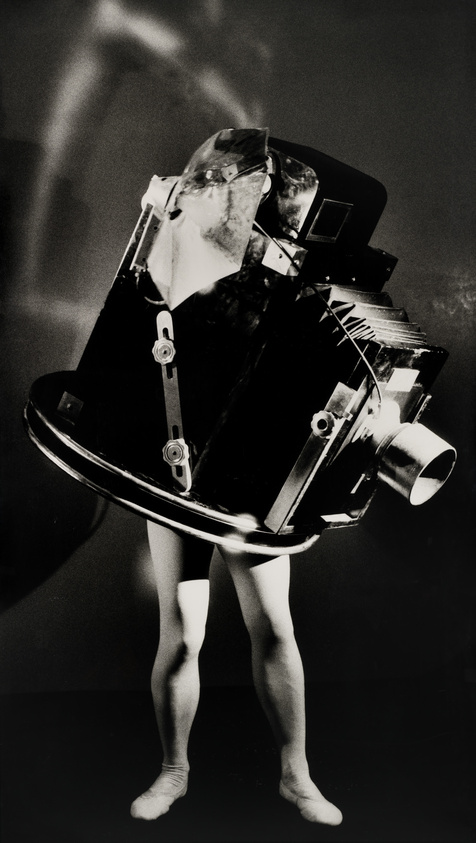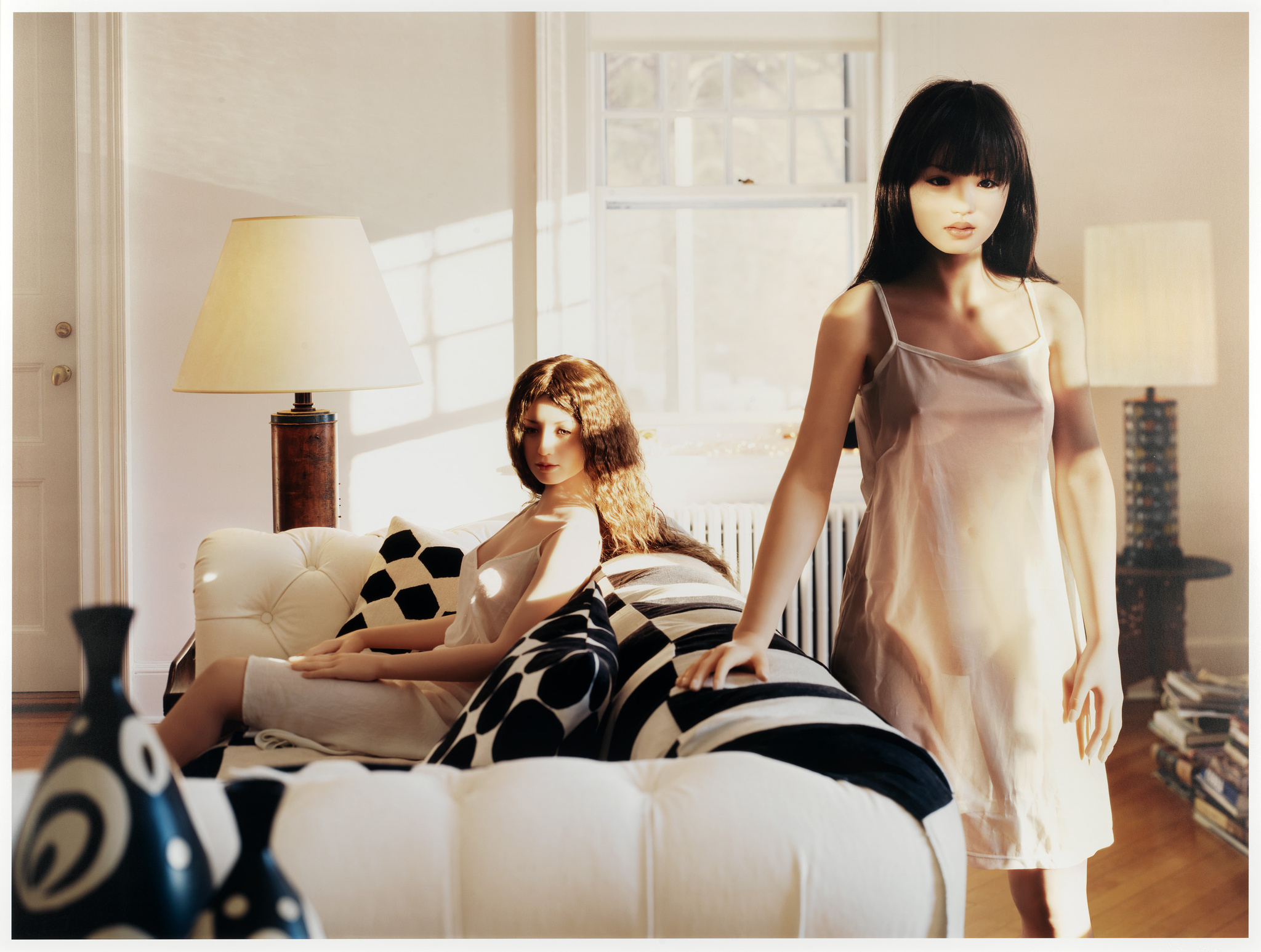Chrissie Iles, Anne & Joel Ehrenkranz Curator, in Conversation with Laurie Simmons on 'Walking Camera II (Jimmy the Camera),' 19
June 17, 2013
In this video, curator Chrissie Iles speaks with artist Laurie Simmons about her work, Walking Camera II (Jimmy the Camera) from 1987. The artist explains the inspiration behind the work and how it functions as a portrait of her close friend Jimmy DeSana.
Chrissie Iles: “So tell me about Walking Camera (Jimmy the Camera II), which you made in 1987? How did you come to make this particular work?”
Laurie Simmons: “Well, I’d spent a couple of years shooting at a ventriloquist museum in Kentucky. I was working very closely with a ventriloquist named Doug Skinner and one day I was at Doug Skinner’s apartment, and I looked on the wall, and there was a picture of a matzo box on legs. And I had a kind of recovered memory of seeing the Chesterfield cigarette boxes dancing on TV when I was really tiny, almost pre-memory. And it kind of jogged a whole new train of thought. Ventriloquists are investing a personality into this inanimate object. And here I saw this matzo box, which then translated into a package of cigarettes, and thought about the unwieldiness of that physical object on legs. Shortly after that, I happened to see the movie the The Wiz. There was a camera walking around in the background, an incredible prop of a camera, and it occurred to me that I had to get that camera, and I had to shoot it on somebody’s legs in it, and that was the beginning of this whole train of thought.And it really was obvious to me that my friend and mentor, Jimmy De Sana, had to wear the prop because not only had he taught me everything I knew about photography, and was a really close friend, but also he had been diagnosed with AIDS, and I think it was unspoken between us, but we both knew that there wasn’t that much time left. I mean we hoped that there was time left, he and I, but kind of knew that there wasn’t, and it seemed like we both got the message that it would be sort of a funny and touching and significant tribute to him. I just sort of let him move around in the camera, I shot it with a 35 millimeter Nikon, and as he would kind of bend and move around, I let him move with it, I just kept shooting, and then in the end I edited the shots that I thought felt the most animated, or felt the most like him actually.”
Iles: “So this on a certain level is a portrait of Jimmy?”
Simmons: “It’s a portrait on the most primary level.”


